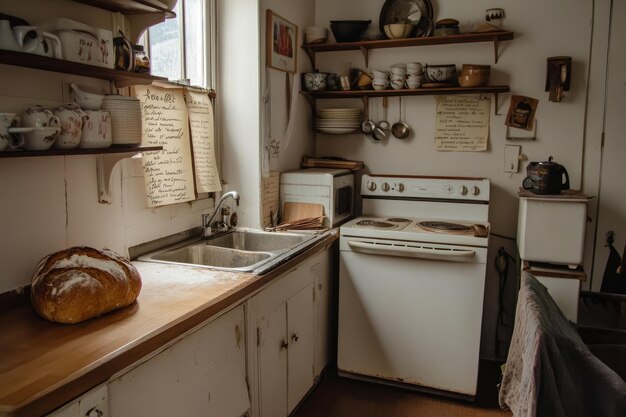When Was the Electric Refrigerator Invented: A Deep Dive into Its History and Evolution
Have you ever paused in front of your refrigerator, grateful for its life-preserving abilities, and wondered how this everyday appliance came to be? The electric refrigerator, now a staple in households around the world, has a fascinating backstory. Join me as we explore the innovation journey that led to the convenient refrigerators we rely on today.
The Early Days of Refrigeration
The concept of refrigeration goes back centuries, long before the invention of the electric refrigerator.
Ancient Cooling Techniques
Before the invention of modern refrigeration, humans relied on nature and ingenuity to preserve food and offer refreshment. In ancient times:
- Ice and Snow: Civilizations would harvest ice and snow from mountains or colder climates.
- Evaporation Cooling: Methods such as leaving earthen pots in breezy areas or wetting them to cool contents through evaporation were common.
- Cellars and Ground Storage: Underground storage took advantage of cooler earth temperatures.
While these methods were rudimentary, they laid the groundwork for future innovations in refrigeration technology.
The 19th Century Breakthroughs: Setting the Scene
The 1800s marked significant strides in refrigeration, leading to the development of the electric refrigerator.
- Ice Houses and Iceboxes: The commercial use of ice houses and personal iceboxes was popular, particularly in cold climates or areas with easy access to natural ice.
- Mechanical Refrigeration: The first artificial refrigeration was a byproduct of experiments with vapor compression. Innovators like Oliver Evans and Jacob Perkins paved the way for commercial and domestic refrigeration concepts.
Birth of the Electric Refrigerator: Who, When, and Why
The true dawn of the electric refrigerator began in the early 20th century.
Inventing the First Electric Refrigerator
The electric refrigerator was not the innovation of a single individual but rather the result of cumulative efforts across time.
- 1913: Fred W. Wolf introduced the "Domelre" or Domestic Electric Refrigerator. This initial model was mounted on top of an icebox.
- 1914: Nathaniel B. Wales designed a practical electric refrigerator, leading to the foundation of the Kelvinator Company, which commercialized early models.
By the 1920s, electric refrigerators began to replace iceboxes in homes, offering a more efficient, reliable means of keeping food fresh.
How It Worked: The Refrigeration Cycle
Understanding the basic science of how early refrigerators functioned is crucial to appreciating their impact.
- Compression Cycle: Refrigerators work on a simple principle involving the compression and expansion of gases. This cycle allows the appliance to absorb heat, thereby cooling the interior.
- Energy Efficiency: Despite initial challenges, advancements in compressor technology helped make refrigerators more energy-efficient.
Evolution and Technological Milestones
The story of the electric refrigerator is one of continuous improvement and adaptation.
Key Developments Over the Years
From the first manual models to today's smart appliances, refrigerators have undergone multiple transformations.
- 1930s: Introduction of Freon as a refrigerant, making refrigerators safer and more efficient.
- 1940s-50s: The era saw the introduction of freezer compartments, expanding the range of food preservation.
- 1980s: Energy efficiency became a priority, leading to design changes and the introduction of energy labels.
Modern Innovations
Present-day refrigerators are cutting-edge, laden with technology.
- Smart Technology: Internet-connected refrigerators with touchscreens and internal cameras.
- Eco-Friendly Models: Utilization of environmentally friendly refrigerants and improved insulation.
The Impact of Refrigeration on Society
The development of the electric refrigerator transformed both domestic life and industries.
Social and Economic Influence
Refrigeration dramatically changed food production, distribution, and consumption patterns.
- Food Safety: Improved preservation led to decreased food spoilage and wastage.
- Global Trade: Enabled the transportation of perishable goods over long distances, impacting global markets and diets.
- Convenience and Lifestyle: Simplified meal planning and food storage, allowing for new culinary possibilities.
Quick Reference: Essential Facts & Tips 💡
Here's a snapshot of the electric refrigerator's journey and practical tips.
- Historical Context: Early refrigerators were luxury items; affordability increased with mass production.
- Maintenance Tips: Extend lifespan by keeping coils clean and ensuring door seals are airtight.
- Innovation: Stay updated with smart technology for enhanced user experience and energy efficiency.
Looking Ahead: Future of Refrigerator Technology
The evolution of refrigerators is ongoing, driven by environmental considerations and technological advances.
Trends and Innovations to Watch
- AI Integration: Predictive maintenance and inventory management through AI.
- Sustainability: More sustainable materials and energy sources.
- Health Monitoring: Integration of health monitoring features, such as sensors to recommend food consumption based on individual dietary needs.
The Role of Consumer Choices
As consumers, awareness and choices influence the market, pushing manufacturers towards greener and more innovative solutions.
Wrap-Up: A Tribute to Innovation
Refrigeration has come a long way from rudimentary ice storage to sophisticated appliances. The journey of the electric refrigerator reflects humanity's drive for convenience, safety, and efficiency. As we open the door of our modern refrigerator, we're stepping into a legacy of innovation that continues to shape our kitchens and lifestyles globally.
By understanding its history, improvements, and future directions, we can appreciate not just the appliance itself but the broader influence it has had on society. So next time you grab a snack or a cold drink, remember the long road of technological advancements that made it possible.
Let’s toast to the continued innovation that keeps our world fresh and our meals delicious! 🥂
